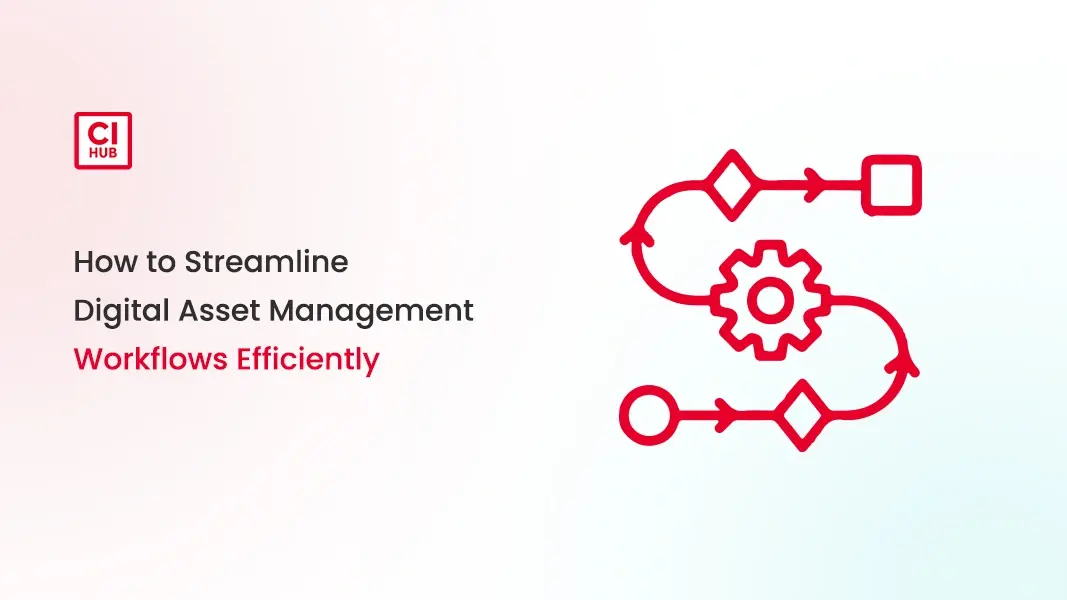Power Your DAM Workflow Seamlessly
Keep every asset organized and approved, ready to use directly in the apps you use daily.

October 04, 2025
TL;DR
Effective DAM workflows organize assets, streamline collaboration, and maintain brand consistency across teams. Understanding workflow types, implementing clear standards, and leveraging tools like DAM platforms and connectors ensures assets are easy to find, up-to-date, and properly distributed. Optimized workflows reduce errors, speed up approvals, and support both creative productivity and long-term brand management.
Consider your team’s current process for managing creative assets. How long does it take to locate the correct logo? Can all team members access approved brand imagery immediately? Are outdated files still in circulation? These common challenges highlight the need for an effective digital asset management workflow. In this blog, we will explore how to streamline DAM workflows efficiently, improve collaboration, and ensure teams always work with the right, up-to-date assets.
What We’ll Cover
What is a Digital Asset Management Workflow?
Types of Digital Asset Management Workflows
Common Challenges in DAM Workflows
How to Optimize Digital Asset Management Workflows
The Tools That Power Smarter Workflows
The Benefits of Streamlined DAM Workflows
Building a Workflow That Works for You
Frequently Asked Questions
A Digital Asset Management (DAM) workflow is a structured process that guides how digital assets such as images, videos, documents, and other media are created and organized. A DAM workflow ensures assets are efficiently managed throughout their lifecycle.
It defines the steps an asset goes through from creation to final use, including edits, approvals, and distribution. By implementing a streamlined workflow, teams maintain brand consistency, improve collaboration, and ensure everyone works with up-to-date, approved materials. To see how a DAM workflow operates in practice, it helps to view it through the lens of the digital asset lifecycle:
Not every team manages assets the same way. The right workflow depends on your project goals, asset types, and collaboration needs. Here are the main types of DAM workflows:

Even well-intentioned teams struggle with common workflow challenges that create bottlenecks and frustrations.
Successful workflow optimization starts with understanding your team's specific needs and pain points. The most effective improvements address real problems that people face daily.
Create comprehensive guidelines for file naming, folder structures, and metadata entry. These standards should be simple enough for everyone to follow consistently but detailed enough to prevent confusion. Train team members on these standards and make reference materials easily accessible.
Look for workflow steps that happen repeatedly and consider automation options. This might include automatic file naming based on metadata, scheduled reports on asset usage, or automated backup processes. Automation reduces manual work and prevents human errors.
Develop a controlled vocabulary for tagging assets. Use standardized terms that make sense to your team and support your search needs. Consider using taxonomies or folder structures that mirror how people naturally think about your content.
Design review workflows that move efficiently without sacrificing quality control. Set clear deadlines, define approval responsibilities, and create escalation paths for stuck projects. Consider automated notifications to keep reviews moving forward.
Centralize asset storage so teams always know where to find current, approved materials. Eliminate duplicate storage locations and establish clear policies about what belongs where. This prevents version confusion and ensures everyone works with the same files.
Invest in search functionality that goes beyond basic filename matching. Teams should be able to search by metadata, visual similarity, usage history, and other relevant criteria. Good search capabilities make large asset libraries manageable and productive.
Optimizing your DAM workflows creates a foundation for creative workflow optimization, streamlined collaboration, and consistent branding. For more insights, explore our blog on Digital Asset Management Best Practices.
The right technology infrastructure supports efficient DAM workflows without creating additional complexity for users. Here are some effective software solutions:
Modern DAM platforms provide centralized storage, robust search capabilities, and workflow management tools. Look for solutions that integrate well with your existing creative software and support your team's collaboration needs.
Key features to consider:
In-app DAM connectors extend the value of a DAM by embedding approved assets directly into the tools teams use every day. Instead of interrupting creative or marketing workflows, connectors make it possible to search, drag, and update assets from within design software, office applications, CMS, or project management platforms. This removes the friction of switching systems, reduces asset duplication, and ensures that only the latest, approved versions flow across campaigns and channels.
Understanding how assets perform helps teams make better decisions about future content creation and workflow improvements. Track download patterns, usage frequency, and user behavior to identify optimization opportunities.
Built-in commenting, annotation, and approval features keep feedback organized and projects moving forward. Teams can have contextual discussions about specific assets without switching between multiple platforms.
Keep every asset organized and approved, ready to use directly in the apps you use daily.
Efficient workflows directly impact brand quality and consistency across all customer touchpoints. Implementing a streamlined DAM workflow helps your organization in:
Well-organized workflows ensure teams always use current, approved brand materials. Outdated logos, incorrect color schemes, and superseded messaging get filtered out before reaching audiences. This prevents embarrassing brand inconsistencies that damage credibility.
A well-structured DAM workflow lays out each stage an asset must pass through before it is finalized. This clarity helps teams stay aligned, making it simpler to share feedback, manage edits, and complete approvals without confusion or delays.
A streamlined DAM workflow keeps every file in one place, properly organized and tagged with the right metadata. This makes it simple for anyone on your team to find the exact asset they need, without wasting time browsing through folders or chasing colleagues.

Brands change over time, and workflows must accommodate these updates smoothly. When new brand guidelines emerge, effective DAM workflows help teams transition from old materials to new ones systematically. Asset archiving removes outdated content while new materials get proper distribution.
Customers interact with brands across multiple channels and touchpoints. Consistent asset management ensures that brand presentation remains cohesive, whether customers encounter content on websites, social media, print materials, or partner channels.
Analytics from DAM workflows provide insights into which brand assets perform best across different contexts. This data helps creative teams understand what resonates with audiences and guides future brand development efforts.
No single workflow fits every team, but the principles remain the same: clarity, consistency, and the right technology. A well-structured DAM workflow should evolve with your brand and integrate smoothly into everyday processes. Adding tools like DAM connectors ensures those workflows don’t stop at the DAM itself but extend directly into the platforms where work happens. With this approach, you build a system that supports long-term growth while keeping creative teams focused on what they do best.
DAM management is the process of storing, organizing, and distributing digital assets such as images, videos, and documents. It ensures teams can easily find and use approved, up-to-date materials.
Common workflow types include project-based, asset-based, collaborative, and approval workflows. Each serves a different purpose in managing assets efficiently through their lifecycle.
Key components include asset ingestion, metadata and tagging, version control, approvals, access permissions, distribution, and archival. Together, they guide assets from creation to storage and retrieval.

Article by
Michael Wilkinson
Marketing & Communications Consultant of CI HUB